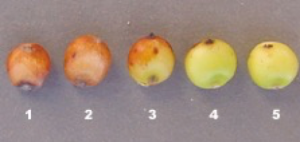This tip was provided by:
Ronnie Schnell, Cropping Systems – Statewide, College Station, ronschnell@tamu.edu
Statewide
Grain Sorghum Harvest Aids and SCA
A common question in recent years is whether or not to use a harvest aid, such as glyphosate, if sugarcane aphids are present. Do not use a harvest aid or desiccant as a tool to manage sugarcane aphids. It is uncertain how the aphid will respond following desiccation of the plant. Aphids could move toward the head and create harvest problems. If aphids are at or approaching threshold and could become problematic at harvest, consider an insecticide application. If you need or typically use a harvest aid, follow standard protocol for harvest aid use in sorghum. Keep in mind that pre-harvest intervals differ between insecticides (14 days for Sivanto and Transform) and harvest aids (7 days for glyphosate).
Desiccating leaf and stem tissue and stopping growth of immature grain heads can result in uniform grain moisture and more favorable harvest conditions for grain sorghum. Sodium chlorate and glyphosate are commonly used products labeled for pre-harvest or harvest aid use in grain sorghum. The primary physiological criteria for application include seed moisture below 30%. Sorghum hybrids reach physiological maturity near 30% moisture, which is best determined by identifying black layer in the seed (Figure 1). Remember that kernels near the base of the head mature last. Seed moisture content can differ as much as 6% from the top of the head to the bottom. Also, tiller heads will likely mature later than primary heads and may contribute significantly to yield. Applying products to soon can reduce grain yield and quality. A summary of grain sorghum harvest aids and their uses can be found at: http://publications.tamu.edu/CORN_SORGHUM/PUB_Harvest%20Aids%20in%20Sorghum.pdf

Figure 1. Sorghum kernels in various stages of maturity harvested from the same head from the most mature (1) to the least mature (5). The black layer is first readily visible in (3) and becomes more distinguishable as the seed loses moisture. Do not confuse black layer, which develops where the seed is attached to the plant (bottom end when in the head), with the black dot on the opposite end of the seed.








